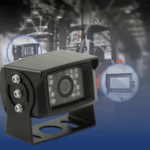
A GPS antenna is a critical component in modern navigation and positioning systems. It captures signals from Global Positioning System (GPS) satellites, enabling devices to determine their precise location. From smartphones to vehicles and industrial equipment, GPS antennas play a pivotal role in ensuring accurate and reliable GPS functionality. This article delves into GPS antenna types, their working principles, and the importance of choosing the right antenna for specific applications.
Understanding the GPS Antenna
A GPS antenna is designed to receive low-power signals transmitted by GPS satellites orbiting Earth. These antennas are engineered to operate within specific frequency ranges (L1, L2, etc.), allowing devices to process the satellite signals accurately. GPS antennas are integral to a variety of applications, including personal navigation, fleet management, agriculture, and aerospace systems.
The antenna converts electromagnetic waves into electrical signals, which are then processed by the GPS receiver. The quality of the antenna directly impacts the system’s ability to maintain a stable and precise connection with GPS satellites, even in challenging environments.
GPS Antenna Types
1. Active GPS Antennas
Active GPS antennas include an integrated low-noise amplifier (LNA) to enhance weak signals from satellites. These antennas are ideal for applications where the GPS receiver is located far from the antenna, such as in vehicles or large equipment. The built-in LNA compensates for signal loss, ensuring better performance in environments with obstructions like buildings or dense foliage.
2. Passive GPS Antennas
Unlike active antennas, passive GPS antennas lack an amplifier. They rely solely on their ability to capture and transmit signals to the GPS receiver. Passive antennas are typically used in applications where the distance between the antenna and receiver is short, such as in portable devices. They are simple, cost-effective, and require no external power source.
3. Patch Antennas
Patch antennas are compact and widely used due to their flat design. They consist of a metallic patch mounted on a dielectric substrate, which makes them efficient at receiving GPS signals. Patch antennas are commonly found in mobile devices and compact navigation systems.
4. Helical Antennas
Helical antennas feature a coil-like structure that makes them more sensitive to circularly polarized signals. These antennas are suitable for applications requiring high performance in environments with multipath interference, such as urban canyons or mountainous regions. Their design enables them to maintain strong connectivity with satellites despite challenging conditions.
5. GPS Internal Antenna
The GPS Internal Antenna is integrated directly into devices, eliminating the need for an external component. These antennas are compact, making them ideal for smartphones, smartwatches, and other portable devices. Although internal antennas save space, their performance can be affected by the device’s design and materials.
Key Features to Consider When Choosing a GPS Antenna
Selecting the right GPS antenna depends on the specific application and operational environment. Several factors should be evaluated to ensure optimal performance:
Frequency Band
GPS antennas must support the required frequency bands to function effectively. The most common bands include L1 (1575.42 MHz) and L2 (1227.60 MHz). Some advanced systems also utilize newer bands like L5 for improved accuracy. Ensure that the chosen antenna is compatible with the desired GPS signals.
Gain
Gain refers to the antenna’s ability to amplify the received signal. High-gain antennas are better suited for challenging environments, where obstacles may weaken satellite signals. However, gain should be balanced with the application’s power and size requirements.
Polarization
GPS signals are circularly polarized, so the antenna must match this polarization to achieve optimal performance. Antennas designed for circular polarization can maintain signal integrity even in environments with reflections or obstructions.
Size and Installation
The size of the GPS antenna depends on the application. For portable devices, compact options like patch or internal antennas are preferred. For industrial or automotive applications, larger external antennas may be necessary for enhanced signal reception. Proper installation is also critical to avoid interference and maximize signal strength.
Applications of GPS Antennas
Automotive Navigation Systems
In vehicles, GPS antennas facilitate turn-by-turn navigation, fleet tracking, and route optimization. Active antennas are commonly used in these applications due to their ability to maintain strong connectivity, even in urban areas with signal blockages.
Smartphones and Wearables
The GPS Internal Antenna is standard in smartphones and wearables, allowing users to access location-based services like maps and fitness tracking. The compact design of internal antennas ensures seamless integration with the device’s aesthetics.
Surveying and Mapping
High-precision GPS antennas are essential for surveying, mapping, and geospatial data collection. These antennas, often coupled with advanced receivers, provide centimeter-level accuracy, making them invaluable for industries like construction and agriculture.
Aerospace and Defense
In aerospace and defense, GPS antennas enable navigation and communication in high-stakes environments. Helical and active antennas are often employed in these applications for their reliability and ability to handle dynamic conditions.
Maintaining and Optimizing GPS Antenna Performance
To ensure consistent performance, GPS antennas require proper installation and regular maintenance. Here are key practices to follow:
- Avoid Obstructions: Install the antenna in a location with a clear line of sight to the sky. Obstructions like buildings, trees, or metal structures can degrade signal quality.
- Minimize Interference: Keep the antenna away from sources of electromagnetic interference, such as power lines or electronic devices.
- Inspect Regularly: Check for physical damage, wear, or corrosion. Damaged antennas should be replaced to maintain optimal performance.
- Use High-Quality Connectors: Ensure the connectors used with the antenna are of high quality to prevent signal loss.
Conclusion
GPS antennas are indispensable in enabling precise navigation, tracking, and positioning across diverse applications. Understanding the different GPS antenna types, such as active, passive, and internal antennas, helps in selecting the right solution for specific needs. Whether it’s an advanced automotive system, a smartphone, or a high-precision surveying device, the antenna’s quality determines the overall performance of the GPS system. By choosing the appropriate antenna and following best practices for installation and maintenance, you can ensure reliable and accurate GPS connectivity in any environment.







